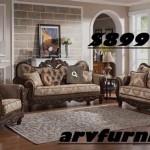Spray Painting Furniture with Chalk Paint: A Comprehensive Guide
Chalk paint has become a popular choice for furniture refinishing due to its matte finish, ease of application, and versatility. While typically applied with a brush, spray painting chalk paint offers a smoother, more uniform finish, especially beneficial for intricate details or larger surfaces. This article provides a detailed guide on spray painting furniture with chalk paint, covering preparation, application techniques, and troubleshooting common issues.
The key advantage of spray painting chalk paint lies in achieving a flawlessly smooth and even coat, minimizing brushstrokes and reducing the time required for larger projects. However, it is crucial to understand the specific properties of chalk paint and its compatibility with spray equipment to achieve optimal results. This article delves into different spray painting methods, including aerosol cans and paint sprayers, emphasizing the importance of proper preparation and technique.
Understanding Chalk Paint for Spray Application
Chalk paint is a type of decorative paint known for its matte finish and excellent adhesion to various surfaces, often without the need for extensive priming or sanding. Its unique composition, typically containing calcium carbonate, contributes to its characteristic chalky texture. However, this texture also presents a challenge when spray painting, as it can be thicker and more prone to clogging spray nozzles compared to traditional paints. Successfully spray painting chalk paint requires proper thinning and careful attention to the equipment used.
Before attempting to spray chalk paint, it's essential to understand its consistency. It's generally thicker than latex or oil-based paints, necessitating dilution for optimal spraying performance. The ideal consistency should resemble thin milk. Over-thinning can lead to runs and poor coverage, while insufficient thinning can cause clogs and an uneven texture. Experimentation on a test surface is always recommended to determine the correct thinning ratio for the specific chalk paint brand and spray equipment being used.
Furthermore, the type of chalk paint formulation plays a role. Some brands are specifically designed for spray application, while others may require more extensive modification. Reviewing the manufacturer's recommendations is crucial before beginning any project. If instructions are unclear, contacting the manufacturer directly for guidance is advisable.
Preparing Furniture for Spray Painting
Proper furniture preparation is paramount to achieving a professional-looking finish when spray painting with chalk paint. This process involves cleaning, repairing, and, in some cases, sanding the furniture to ensure optimal paint adhesion and a smooth final surface. Skipping these steps can result in a subpar finish with potential for peeling, chipping, or visible imperfections.
The first step is thorough cleaning. Remove any dust, dirt, grease, or wax buildup from the furniture surface. Use a mild detergent and water solution, followed by a clean water rinse. For greasy surfaces, a degreasing agent is recommended. Allow the furniture to dry completely before proceeding to the next step.
Next, inspect the furniture for any damage, such as chips, cracks, or loose veneer. Repair these imperfections using wood filler or epoxy. Sand the repaired areas smooth once the filler has dried completely. If the existing finish is glossy or unstable, light sanding may be necessary to create a better surface for the chalk paint to adhere. A fine-grit sandpaper (220 grit or higher) is typically sufficient. Avoid aggressive sanding, as this can damage the furniture.
Masking off areas that should not be painted is another critical step. Use painter's tape and paper or plastic sheeting to protect hardware, glass panels, or other decorative elements. Secure the masking materials tightly to prevent paint bleed-through. Prior to painting, wipe down the prepared surface with a tack cloth to remove any residual dust particles. This will help ensure a smooth and clean paint application.
Spray Painting Techniques and Best Practices
Successful spray painting with chalk paint requires mastering specific techniques to achieve a uniform and professional-looking finish. Whether using aerosol cans or a dedicated paint sprayer, consistent motion, proper distance, and controlled paint flow are essential.
When using aerosol cans, shake the can thoroughly for at least two minutes to ensure the paint is well mixed. Hold the can approximately 8-10 inches away from the furniture surface and apply the paint in even, overlapping strokes. Avoid holding the can in one spot for too long, as this can lead to runs and drips. Multiple thin coats are preferable to a single thick coat. Allow each coat to dry completely before applying the next, as indicated by the paint manufacturer.
For those using paint sprayers, thinning the chalk paint is crucial. Follow the manufacturer's recommendations for thinning ratios, but generally, start with a small amount of water and gradually increase it until the paint reaches the desired consistency. Test the spray pattern on a piece of cardboard or scrap wood to ensure the paint is spraying evenly and without splattering. Adjust the sprayer settings as needed to achieve the optimal spray pattern. Maintain a consistent distance from the furniture surface, typically around 6-8 inches, and apply the paint in smooth, overlapping strokes. As with aerosol cans, multiple thin coats are recommended. Clean the paint sprayer thoroughly after each use to prevent clogging and ensure its longevity.
Proper ventilation is essential when spray painting chalk paint. Work in a well-ventilated area or use a respirator to protect yourself from paint fumes. Also, wear protective eyewear and gloves to prevent skin and eye irritation.
After the final coat has dried completely, inspect the furniture for any imperfections, such as runs, drips, or uneven coverage. Lightly sand these areas with fine-grit sandpaper and touch them up with additional paint if necessary. Once the paint is fully dry, consider applying a sealant, such as wax or a clear coat, to protect the finish and enhance its durability. Choose a sealant specifically designed for chalk paint to avoid altering the matte finish.
In cases where detailing is needed, consider dry brushing. This technique involves lightly dipping a dry brush into the chalk paint and then wiping off most of the paint onto a paper towel. Then, lightly brush the furniture in the direction of the grain. This method creates a subtle, aged look and adds depth to the finish. Conversely, washing involves diluting the chalk paint with water to create a translucent glaze. This wash can be applied over a base coat of chalk paint to enhance texture or create a layered effect. The excess wash is then wiped off with a damp cloth, leaving paint in the crevices and details.
With these techniques, using spray paint with chalk paint allows for a professional finish on furniture by eliminating brush strokes and providing an even coat. Experimentation and diligence is key to achieving perfect results.

Full Review Of Chalky Spray Paint Sarah Joy

Makeover A Wooden Cabinet With Spray Chalk Paint Pintyplus

How To Spray Paint A Dresser With Chalk

How To Chalk Paint Furniture Marty S Musings

How To Paint Furniture Using Chalk Confessions Of A Serial Do It Yourselfer

No Fail Chalk Painting Tips For Beginners Marty S Musings

How To Spray Paint A Dresser With Chalk

Spray Painting Furniture The Good Bad And Ugly Youtube

Pros And Cons Of Chalk Paint For Furniture Some My Favorite Makeovers Artsy Chicks Rule

Dresser Makeover Painting Furniture With A Spray Gun


